
Biltmore Estate is a historic house museum and tourist attraction in Asheville, North Carolina. Biltmore House, the main residence, is a Châteauesque-style mansion built for George Washington Vanderbilt II between 1889 and 1895 and is the largest privately owned house in the United States, at 178,926 sq ft (16,622.8 m2) of floor space and 135,280 sq ft (12,568 m2) of living area. Still owned by George Vanderbilt's descendants, it remains one of the most prominent examples of Gilded Age mansions.
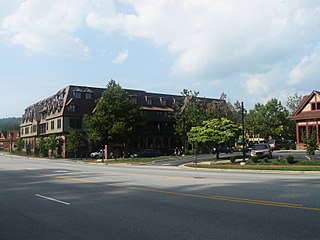
Biltmore Village, formerly Best, is a small village that is now entirely in the city limits of Asheville, North Carolina. It is adjacent to the main entrance of the Biltmore Estate, built by George W. Vanderbilt, one of the heirs to the Vanderbilt family fortune. Once known as the town of Best, George Vanderbilt created this village as a "company town" for the estate workers. The community was planned and designed to reflect the qualities of an English country village. The village had its own church, which is still in operation today as the Cathedral of All Souls, an Episcopal cathedral. The village also had a hospital, shops, a school, a train station, and other services available.

The Cathedral Church of All Saints is the bishop's church of the Episcopal Diocese of Milwaukee, in Milwaukee, Wisconsin, USA. The current parish is a descendant of a small mission by the Right Reverend Jackson Kemper. It is located in Milwaukee's downtown Yankee Hill neighborhood.

St. Bartholomew's Church, commonly called St. Bart's, is a historic Episcopal parish founded in January 1835, and located on the east side of Park Avenue between 50th and 51st Street in Midtown Manhattan, in New York City. In 2018, the church celebrated the centennial of its first service in its Park Avenue home.

The Church of the Ascension is an Episcopal church in the Diocese of New York, located at 36–38 Fifth Avenue and West 10th Street in the Greenwich Village neighborhood of Manhattan New York City. It was built in 1840–41, the first church to be built on Fifth Avenue and was designed by Richard Upjohn in the Gothic Revival style. The interior was remodeled by Stanford White in 1885–88.

St. Peter's Cathedral is the Roman Catholic cathedral at 315 Wyoming Avenue in Scranton, Pennsylvania, and is the mother church of the Roman Catholic Diocese of Scranton. The entire St. Peter's Cathedral Complex is listed on the U.S. National Register of Historic Places.

The Episcopal Diocese of Western North Carolina is a diocese in the Episcopal Church. It consists of 28 counties in western North Carolina and its episcopal see is in Asheville, North Carolina, seated at Cathedral of All Souls. The first recorded worship from the Book of Common Prayer west of the Catawba River was in 1786. Valle Crucis, where one of the two conference centers is located, began as a missionary outpost in 1842. In 1894, a resolution was adopted in the Convention of the Diocese of North Carolina that the Western part of the state be set aside and offered to the General Church as a Missionary District. The following year, in November 1895, the first Convention of the District of Asheville was held at Trinity Church in Asheville. In 1922, after all the requirements had been fulfilled, a petition from the Jurisdiction of Asheville to become the Diocese of Western North Carolina was presented at the General Convention of The Episcopal Church. It was accepted on September 12, 1922.
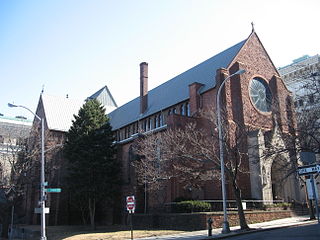
The Cathedral of All Saints, Albany, New York, is located on Elk Street in central Albany, New York, United States. It is the central church of the Episcopal Diocese of Albany and the seat of the Episcopal Bishop of Albany. Built in the 1880s in the Gothic style and designed by Robert W. Gibson, it was listed on the National Register of Historic Places in 1974. Previously it had been recognized as a contributing property to the Lafayette Park Historic District, listed on the Register in 1970.

St. Michael's AnglicanChurch is a historic church and the oldest surviving religious structure in Charleston, South Carolina. It is located at Broad and Meeting streets on one of the Four Corners of Law, and represents ecclesiastical law. It was built in the 1750s by order of the South Carolina Assembly. It is listed on the National Register of Historic Places and is a National Historic Landmark.
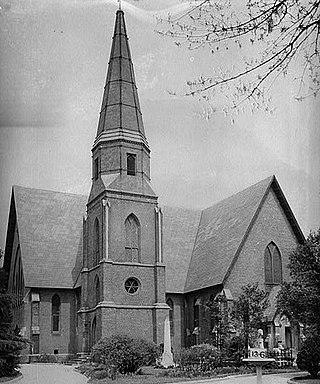
Christ Church (Episcopal) is an Episcopal church in Greenville, South Carolina, United States. which was consecrated in 1854. The church and its courtyard are listed on the National Register of Historic Places as Christ Church (Episcopal) and Churchyard. It is the oldest organized religious body and the oldest church building remaining in Greenville.
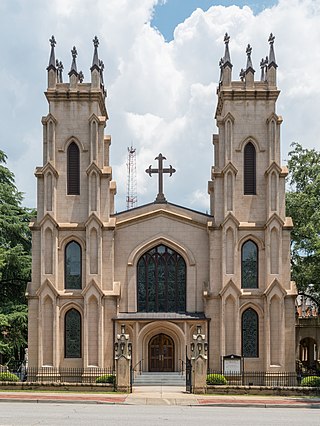
Trinity Episcopal Church, now known as Trinity Episcopal Cathedral, is the first Episcopal and the oldest surviving sanctuary in Columbia, South Carolina. It is a Gothic Revival church that is modeled after York Minster in York, England. It was named to the National Register of Historic Places on February 24, 1971.

St. Luke’s Episcopal Church is a historic Carpenter Gothic–style Episcopal church building located at 219 Chunns Cove Road, in the Chunn's Cove neighborhood of Asheville, North Carolina. Built in 1894, at a cost of $728, St. Luke’s was designed by E. J. Armstrong, a member of the congregation. Its first service was held September 17, 1894.

The Church of the Good Shepherd is a historic Episcopal church in downtown Raleigh, North Carolina. The congregation branched off of Christ Episcopal Church in 1874, making it the second oldest Episcopal parish in Raleigh. It is part of the Episcopal Diocese of North Carolina and served as the Pro-cathedral church of the diocese in the mid-1890s.

Grace Episcopal Church is a historic Episcopal parish at 216 East 6th Street in Hopkinsville, Kentucky, United States. It was built in 1883 and added to the National Register of Historic Places in 1982. The church is a member of the Episcopal Diocese of Kentucky.
Richard Sharp Smith was an English-born American architect, noted for his association with George W. Vanderbilt's Biltmore Estate and Asheville, North Carolina. Smith worked for some of America's important architectural firms of the late 19th century—Richard Morris Hunt, Bradford Lee Gilbert, and Reid & Reid—before establishing his practice in Asheville. His most significant body of work is in Asheville and Western North Carolina, including dozens of buildings that are listed on the National Register of Historic Places or are contributing structures to National Register Historic Districts.
St. Luke's Episcopal Church is a parish of the Episcopal Church of America located in Vancouver, Washington. The parish is part of the Episcopal Diocese of Olympia and traces its roots to the initial arrival of Anglican worshippers at Fort Vancouver in the Oregon Country in the 1830s; its first dedicated church building was consecrated in 1860.
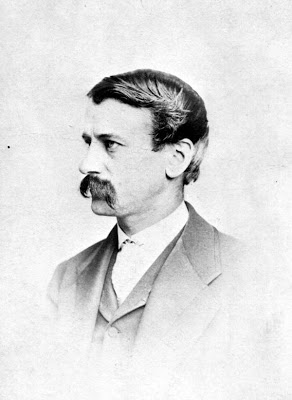
David Maitland Armstrong was Charge d'Affaires to the Papal States (1869), American Consul in Rome (1869–71), and Consul General in Rome (1871–73). He was also an important stained-glass artist and a painter.

Biltmore Industries, Inc., also known as Biltmore Homespun Shops, is a historic industrial complex located adjacent to the Omni Grove Park Inn in Asheville, Buncombe County, North Carolina, now known as Grovewood Village. Biltmore Industries was started by Eleanor Vance and Charlotte Yale, missionaries who moved to Asheville, NC in 1901. The complex of seven buildings were built about 1917 by Fred Loring Seely, and are constructed of hollow ceramic tile with stuccoed exterior wall surfaces. The buildings are The Eleanor Vance Building (1917), Charlotte Yale Building (1917), Carding and Spinning Building (1917), (Former) Weavers' Building (1923), Boiler House (1917), Gatehouse, and Guardhouse (1917). The complex produced high-quality crafts and fine hand-woven wool cloth. The property was listed on the National Register of Historic Places in 1980.

Helen Maitland Armstrong was an American stained glass artist who worked both solo and in partnership with her father, Maitland Armstrong. Her work is considered among the finest produced in America in the late 19th and early 20th centuries.

José Antonio McLoughlin is the seventh and current bishop of the Episcopal Diocese of Western North Carolina, United States. After studies at Virginia Theological Seminary, he was ordained to the diaconate and priesthood in 2005.
























